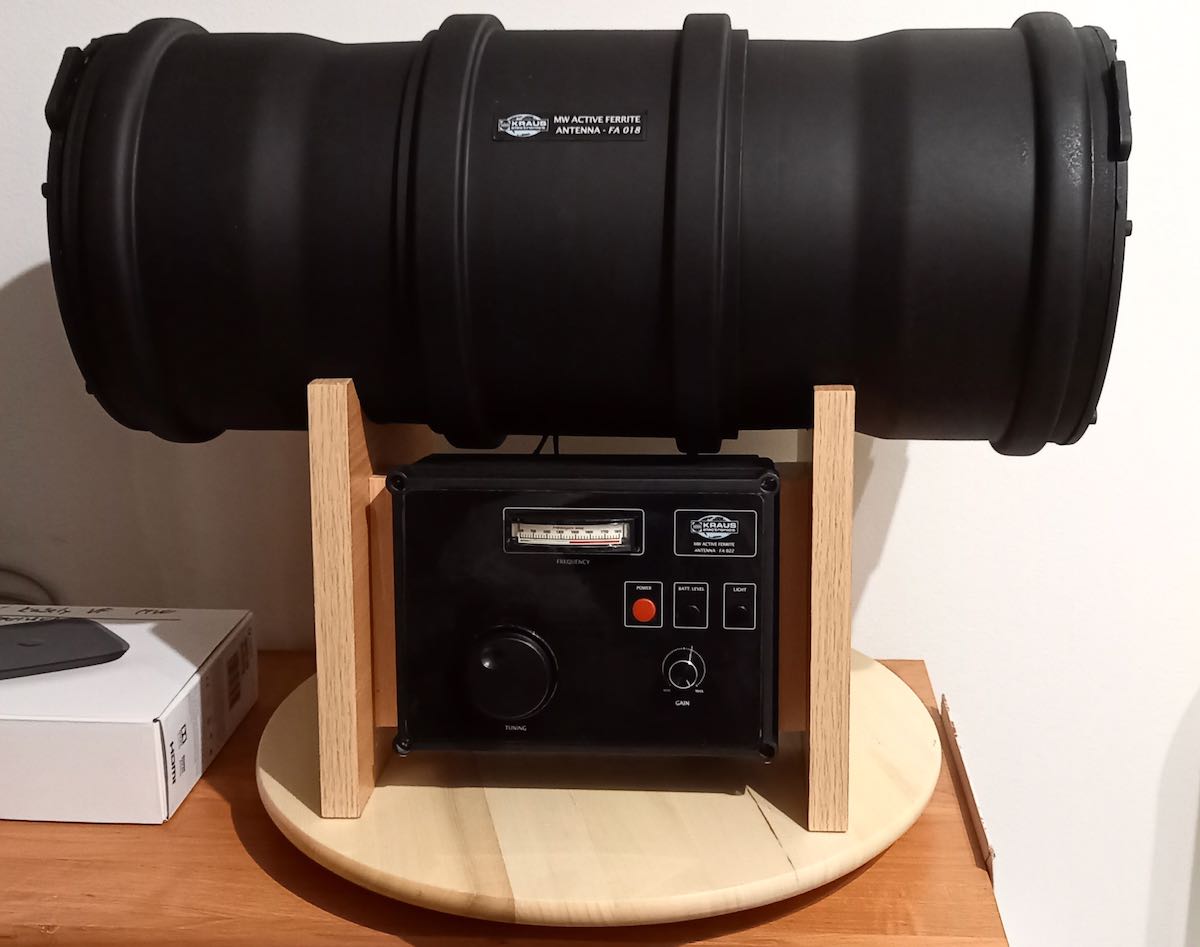
Many thanks to SWLing Post contributor, Pavel Kraus, for the following guest post:
Building a Drain Pipe FSL Antenna
by Pavel Kraus
Hi, I greet all DX fans and the entire SWLing Post community! I enjoy reading reading this blog and the diversity of contributions from our authors and contributors; many thanks from me for so much useful information.
The following are the construction notes of my FSL antenna, which I designed thanks to the suggestions of GaryDeBock, and other FSL designers.
The antenna is a classic design featuring 60 ferrite rods 200x 10 mm, which are placed on a plastic sewage pipe.
In addition, sewer pipe sections are used for the entire antenna cover. I assume that this material can be obtained in other countries as well.
This solution ensures the robustness and durability of the antenna during transport by car as well as resistance to weather conditions. The cover consists of three pipe parts and two plugs.
A spacer ring is glued and screwed to the plugs on the inside, which ensures that the inner tube with the ferrite rods are centered so that it does not come into contact with the antenna cover and prevents possible damage to the ferrites.
The advantage of this construction is the watertightness of the cover and resistance to damage to ferrite rods.
The tuning and coupling windings are led out of the cover through rubber bushings.
The disadvantage is the greater weight, dimensions and appearance reminiscent of an anti-submarine mine. The whole cylindrical monster is loosely seated on a pedestal consisting of chipboard side panels and an electrical installation box with electronics.
The box contains a switchable preamplifier with gain control, tuning capacitor, tuned frequency indication, battery status switch and a scale illumination button.
The tuning winding and the coupling winding are connected via gold-plated cinch connectors on the rear panel. The cylindrical part of the ferrite rod antenna can be easily disconnected and the entire antenna disassembled into two parts – the control electronics and the ferrite rod antenna itself.
The output for the receiver is then realized by a BNC connector.
The tuning winding consists of 19 turns of Litz 1162/46 wire (approx. 300 microHenry), the coupling winding has 1 turn. The coupling winding is connected to the preamplifier. The tuning capacitor is from an old receiver and is mechanically coupled to a potentiometer, which is used to indicate the frequency with a voltmeter.
The preamplifier is switchable, which also allows passive operation by approaching the receiver with a built-in ferrite antenna. On the back there is a case for a 9V battery and a trimmer for calibration of the scale, because due to the gradual reduction of the supply voltage, the indicator may show different values.
The whole monster is placed on a Lazy Susan turntable and sprayed in black:
This antenna does not represent anything revolutionary in terms of construction and connection, I just wanted to point out the possibility of using sewer pipes as a construction material. (If we use a shorter ferrite rod for the construction, the length of the cylindrical cover can be shortened only to the middle part with plugs.)
The antenna is currently being tested in an urban environment (Prague – Czech Republic), however, the results are very good. Tested on Malahit SDR receivers, Eton E1, Kenwood R5000 – direct connection with preamplifier. Passively then Sony ICF 2010, ICF SW 100, ICF SW 77.
Project 2: Active Ferrite Antenna
The second design of the active ferrite antenna is more portable and is suitable for travel with a receiver that does not have a ferrite antenna (Malahit SDR, Eton E1, etc.). The antenna construction is housed in a plastic housing originally intended for a removable car radio panel. All electronics and controls will then fit in this case. There are glued two ferrite rods 200mm x 10mm covered with a plastic tube. Tuning winding connected to a variable capacitor, Coupling winding then to a preamplifier with gain control, powered by a 9V battery.
This antenna is then removably attached to the base (originally an industrial camera holder).
The antenna is surprisingly powerful and allows listening on MW and weaker stations.
I don’t have results and records of remote stations yet, I’m not an orthodox DXer in this sense (and now I’m cold on the balcony). I rather enjoy just tuning the band, listening and going back to my young years, when the jingle of Radio Luxembourg was heard from the air.
I wish everyone a lot of nice DX catches per MW with ferrite and other antennas.
Pavel Kraus, Prague, Czech Republic

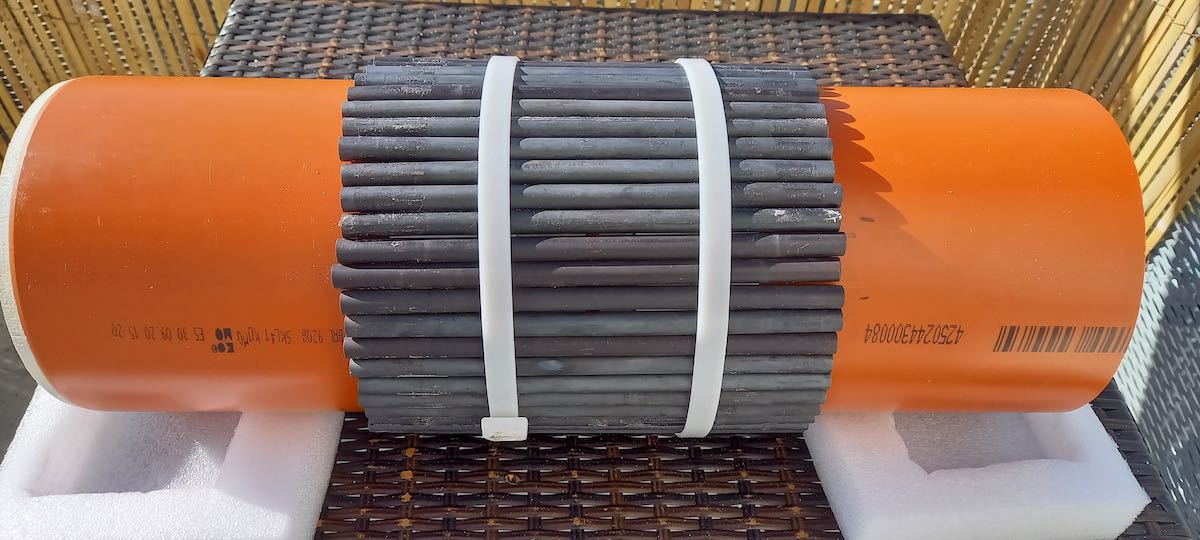
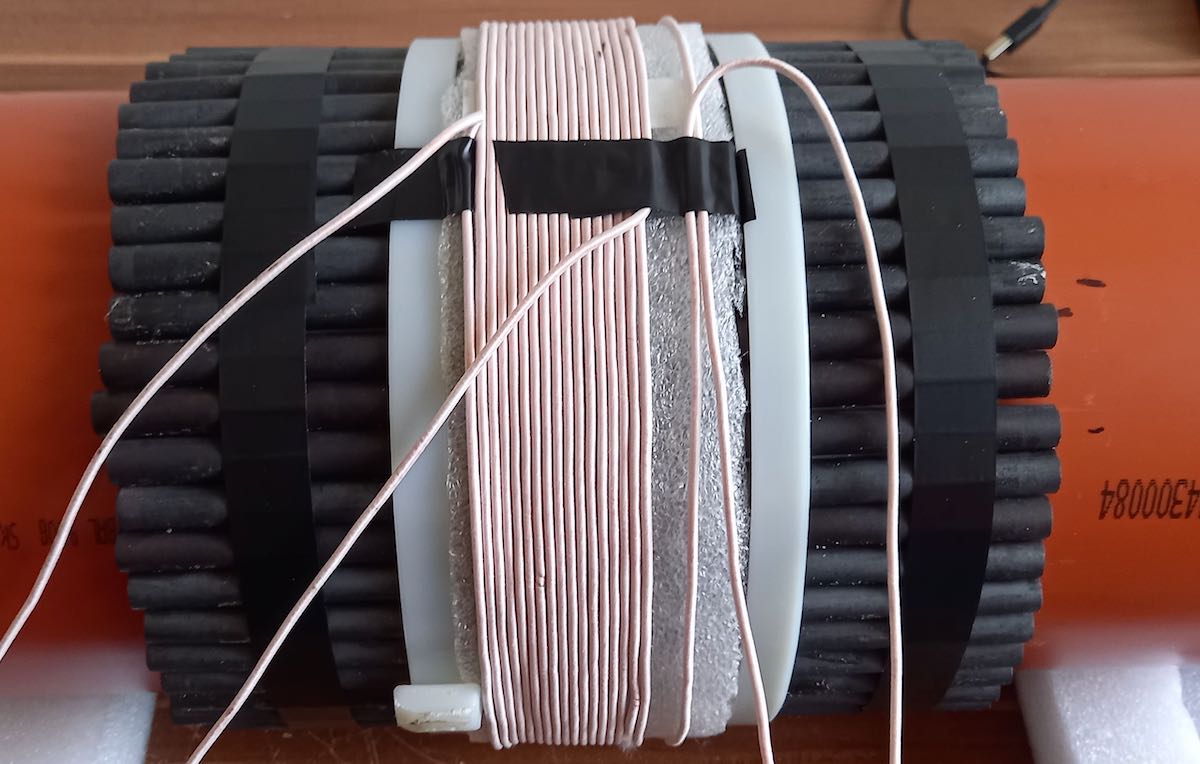
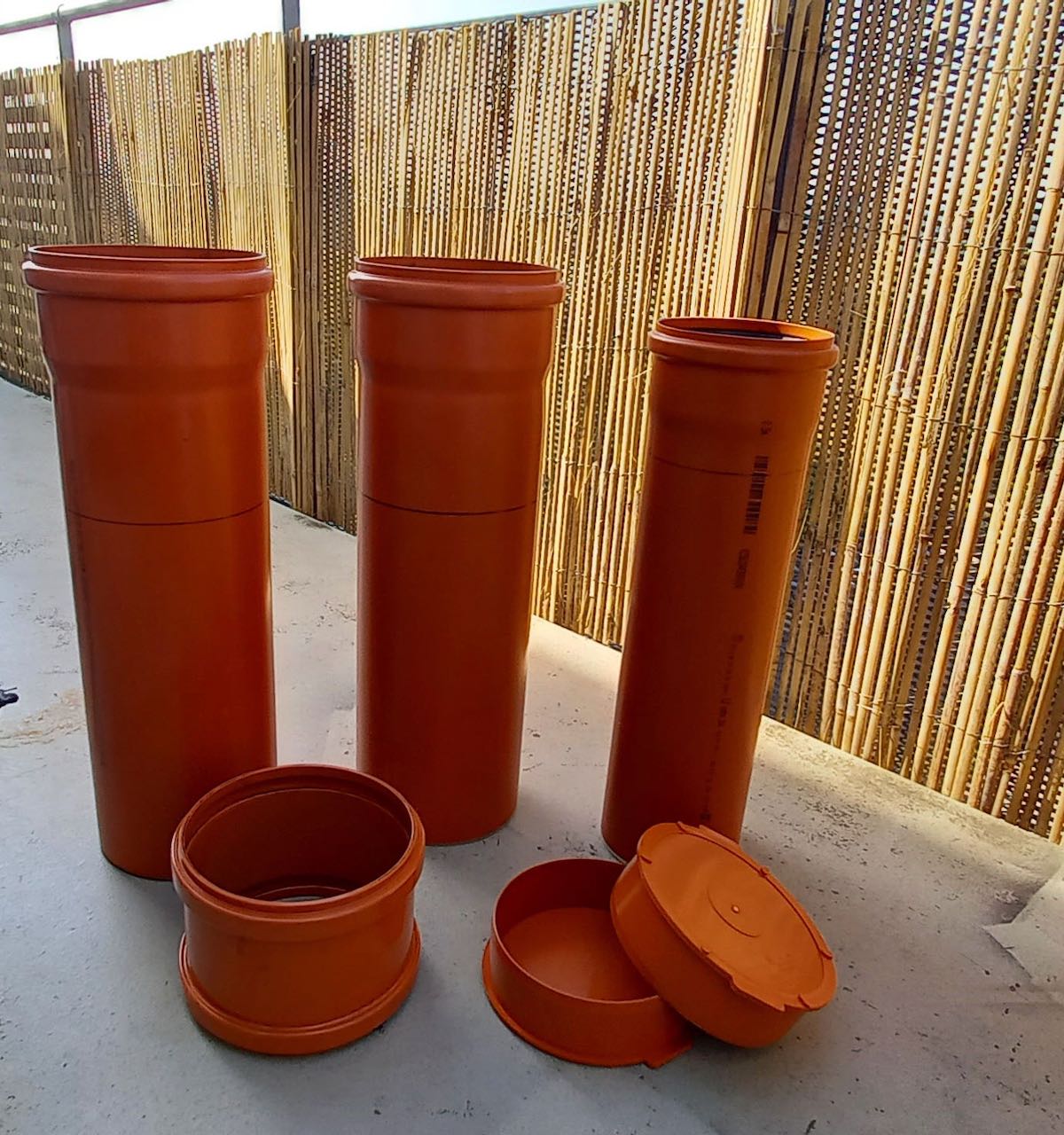
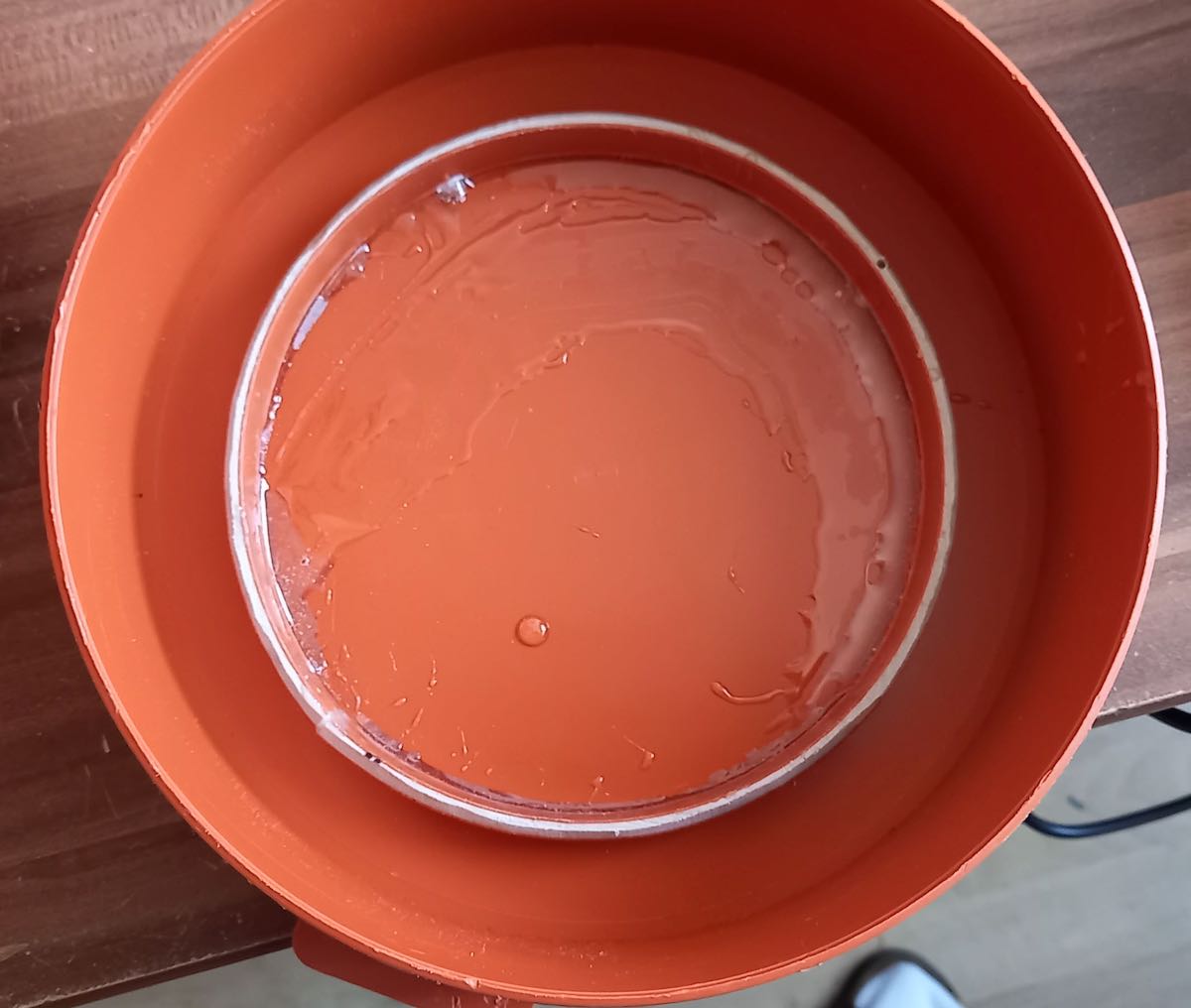
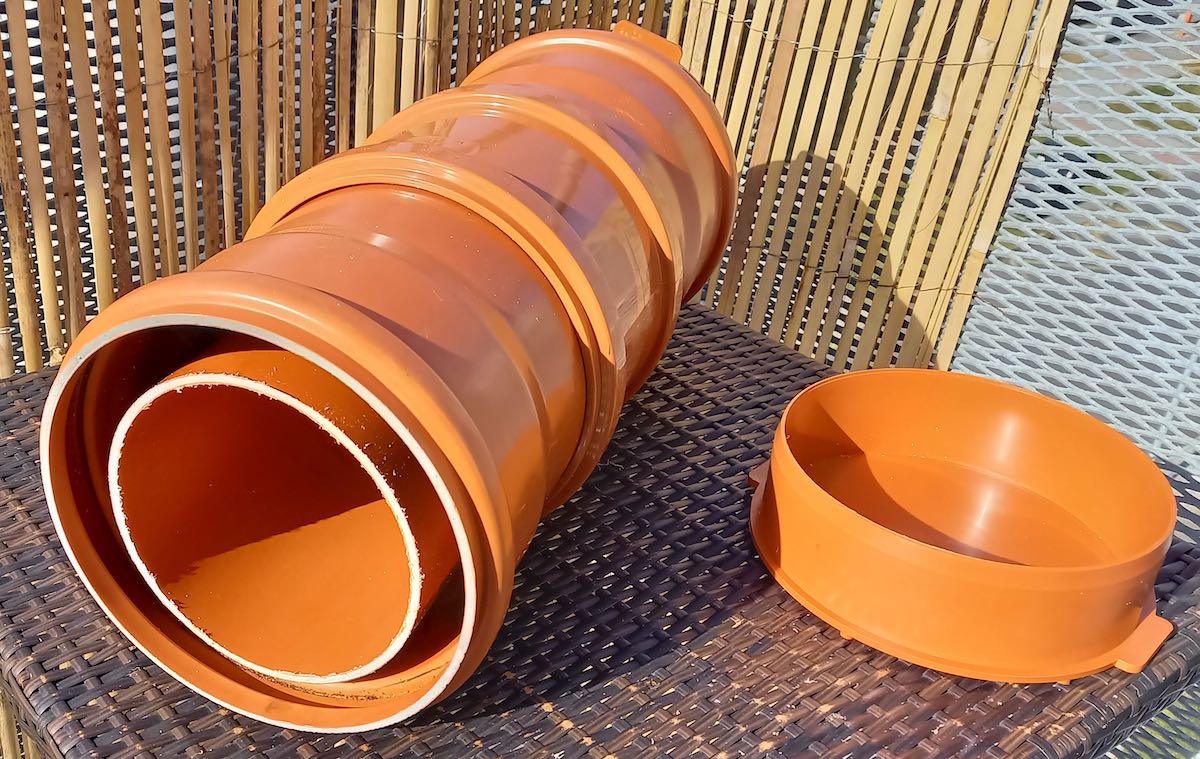
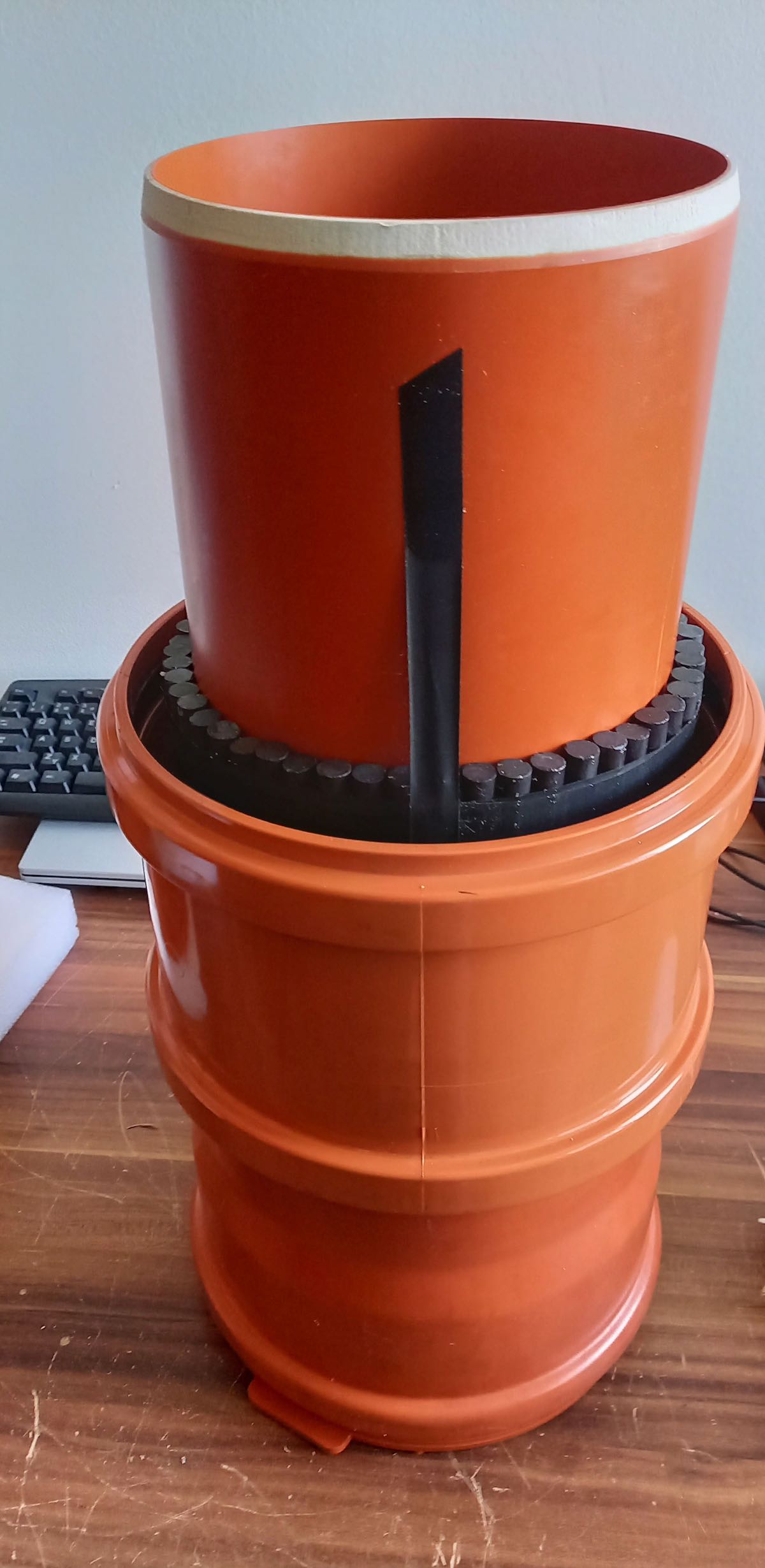

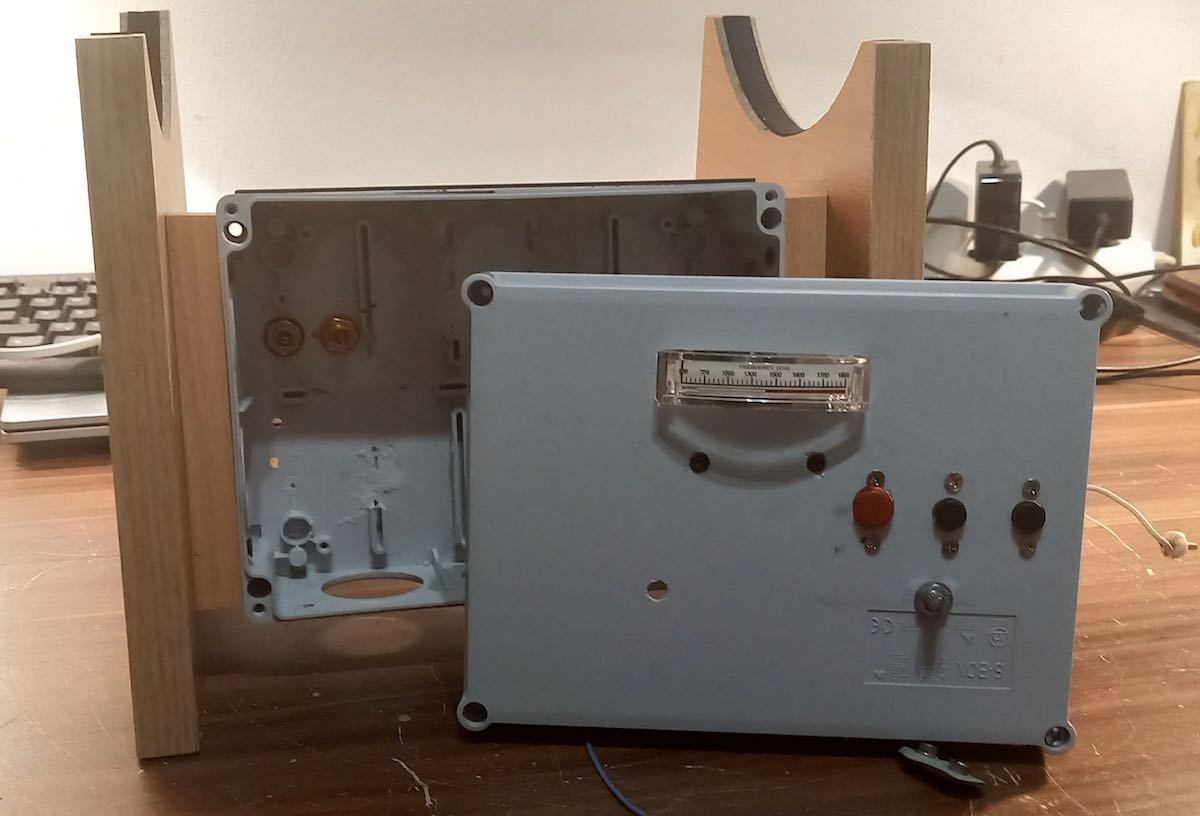
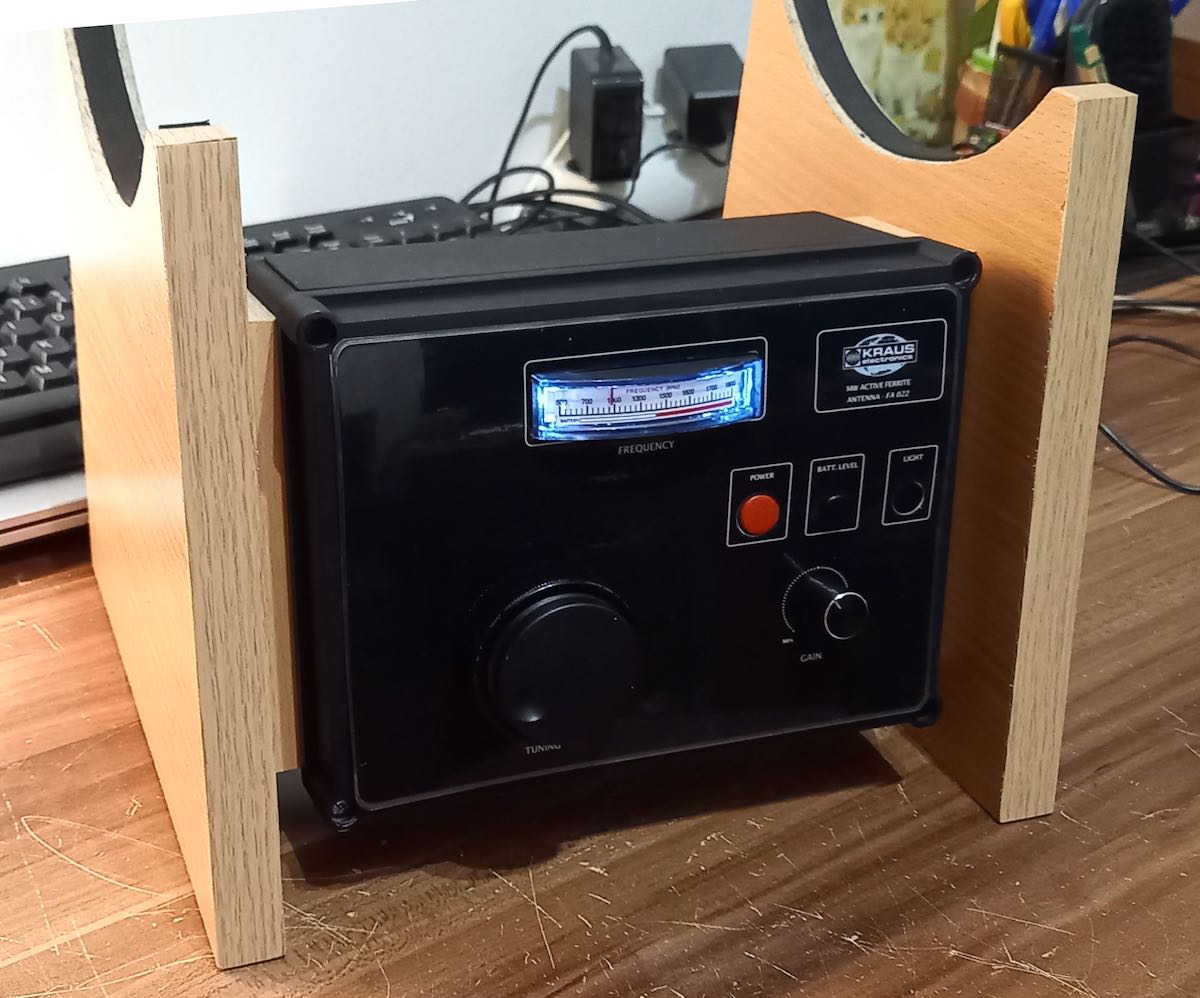
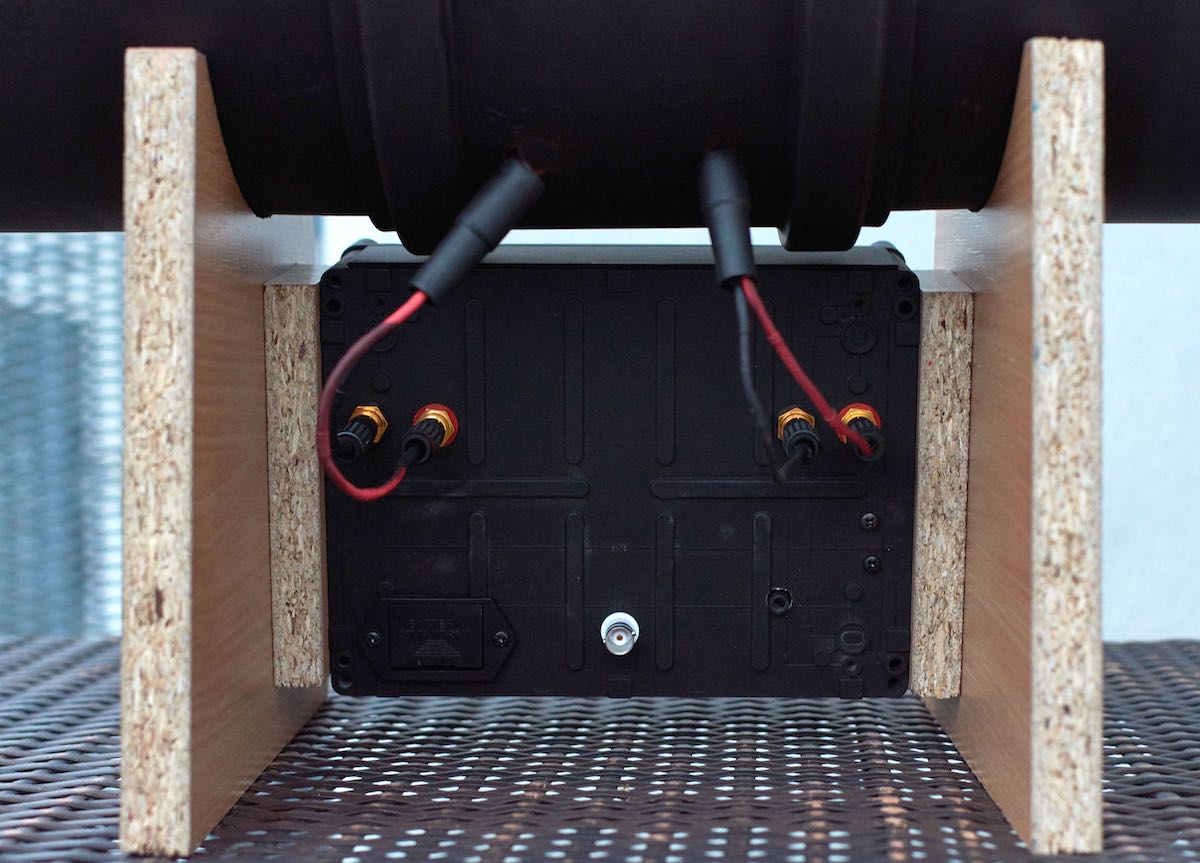
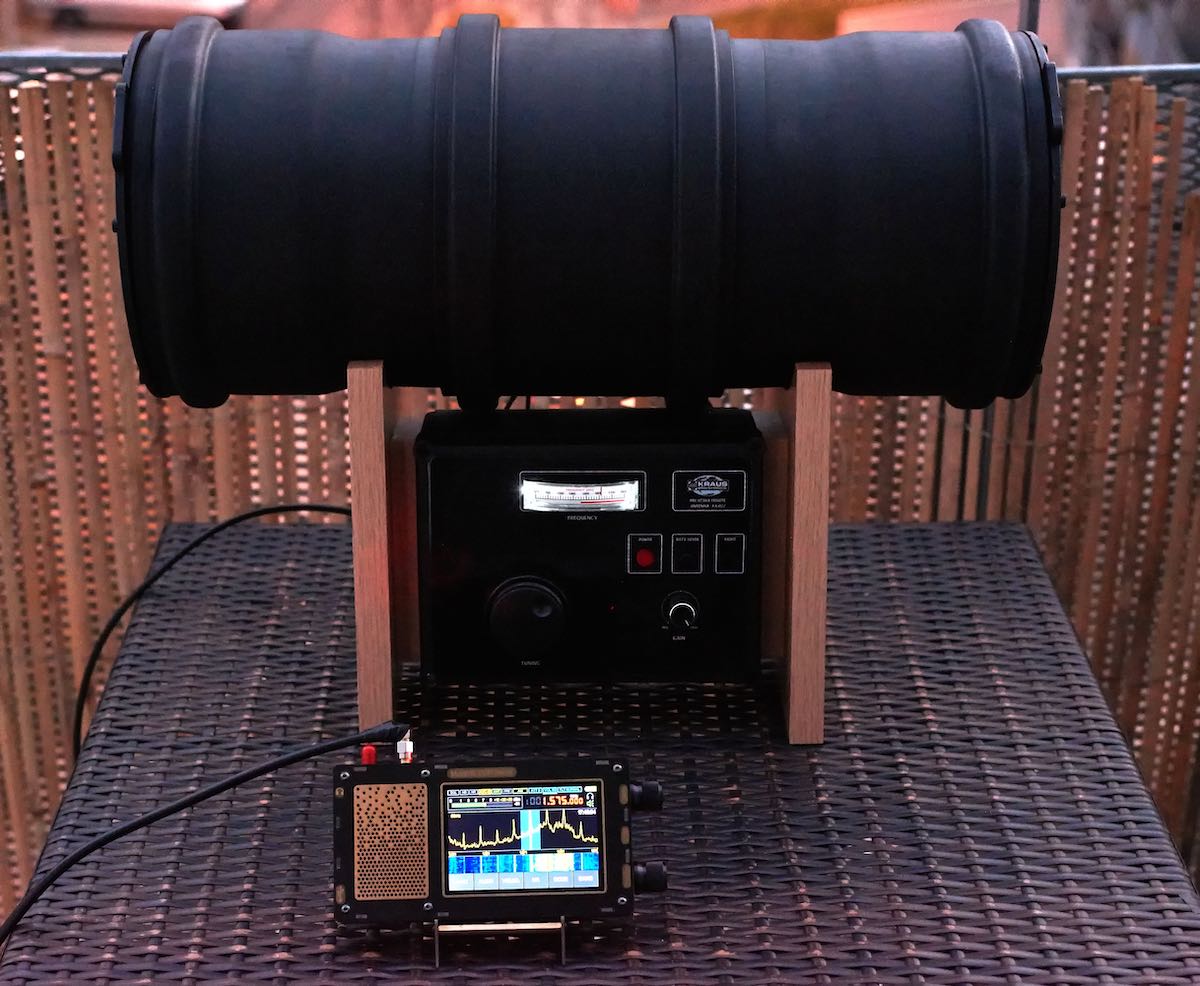



Hi Pavel,
Such a beautiful looking antenna!
Have you made a video about it? If so, can you post a link to your channel?
I’d love to see more of your impressive work.
Have you considered producing one for sale?
Best regards,
Frans
Thanks for sharing this Pavel! It’s given me some inspiration and ideas, I’ve used water pipe but never sewage pipe. I’ve found that you have to test pipes as some have something in them which affects electrical signals….carbon maybe?
As has been mentioned, it’s a shame that ferrite prices are so high but a project like this would be worth it.
Season’s greetings to you.
Ace G6XiB
Hi Ace, thanks for the comment, I didn’t think about the effect of the pipe material. I will try to find out the composition of the material from which they are made.
Thanks
https://en.wikipedia.org/wiki/Polyvinyl_chloride
Pavel,
On your portable version, you have glued together end on end a pair of ferrite rods. Does it makes much difference, because an air gap will drastically reduce the sensitivity of the antenna?
Hi, if the two bars are glued close together, the increase in profit is dramatic. I found out when the bars in the glued joint disconnected and the power went down immediately. The bars are firmly glued with instant glue.
Hi, if the two bars are glued close together, the increase in profit is dramatic. I found out when the bars in the glued joint disconnected and the power went down immediately. The bars are firmly glued with instant glue.
This is a great idea, but not mentioned is the type of ferrite used. Different grades of ferrites have different frequency ranges https://www.amidoncorp.com/specs/ . There also seems to be a lot of Indian ferrite manufacturers as well.
Hi, the parameters given by the seller are as follows:
Initial Permeability (?i): 400 ± 20%
Relative loss factor tan / µi (× 10–6) 50 (100KHZ)
Saturation Flux Density (Bs): 250mT
Remanence (Br): 120mT
Coercivity (Hc): 80A / m
Curie Temperature (Tc): 120 ?
Applied Frequency <3.5MHz
Dear Pavel:
What a great project! The ingenuity is very impressive. Thank you for sharing with us.
All the best in the new year,
Steve, KZ4TN
It looks very professional. Nicely done!
I would be most interested to know how effective this antenna is. Perhaps the author would be kind enough to publish a comparison with a long wire, frame antenna or min-whip. Or perhaps make a video. This is truly military strength electronics!
Hi Veru, I’m definitely planning it and then I’ll post some videos on Youtube.
Great construction ideas Pavel! – Thanks for sharing.
I plan to make a FSL Antenna myself, but have not yet found a source for the ferrite rods at reasonable prices. But when that happens I will copy your idea!
Best whishes!
Egil – LA2PJ
Hi Egil, thank you for the compliment. I buy ferrite rods from the trader “alexer1” from Ebay. The price for 2 pieces is currently $ 8.76. The seller always refills the goods, so it looks like he has enough in stock. But it is true that the price of ferrites for a larger antenna is quite high. I always bought them in parts. The ferrites are well packed, so there was no damage.
Wow, Pavel! Thank you for sharing both of these project. I love the concept behind the monster drain pipe antenna–that’s some great engineering to nest those pipes in a way that it protects those delicate ferrite bars and even makes them weather-proof. And, frankly, I love the beefy design: it looks like something that might be used in the crow’s nest of a ship! Almost steam punk! 🙂
And the smaller active antenna? Great design!
Thank you so much for sharing!
Cheers,
Thomas